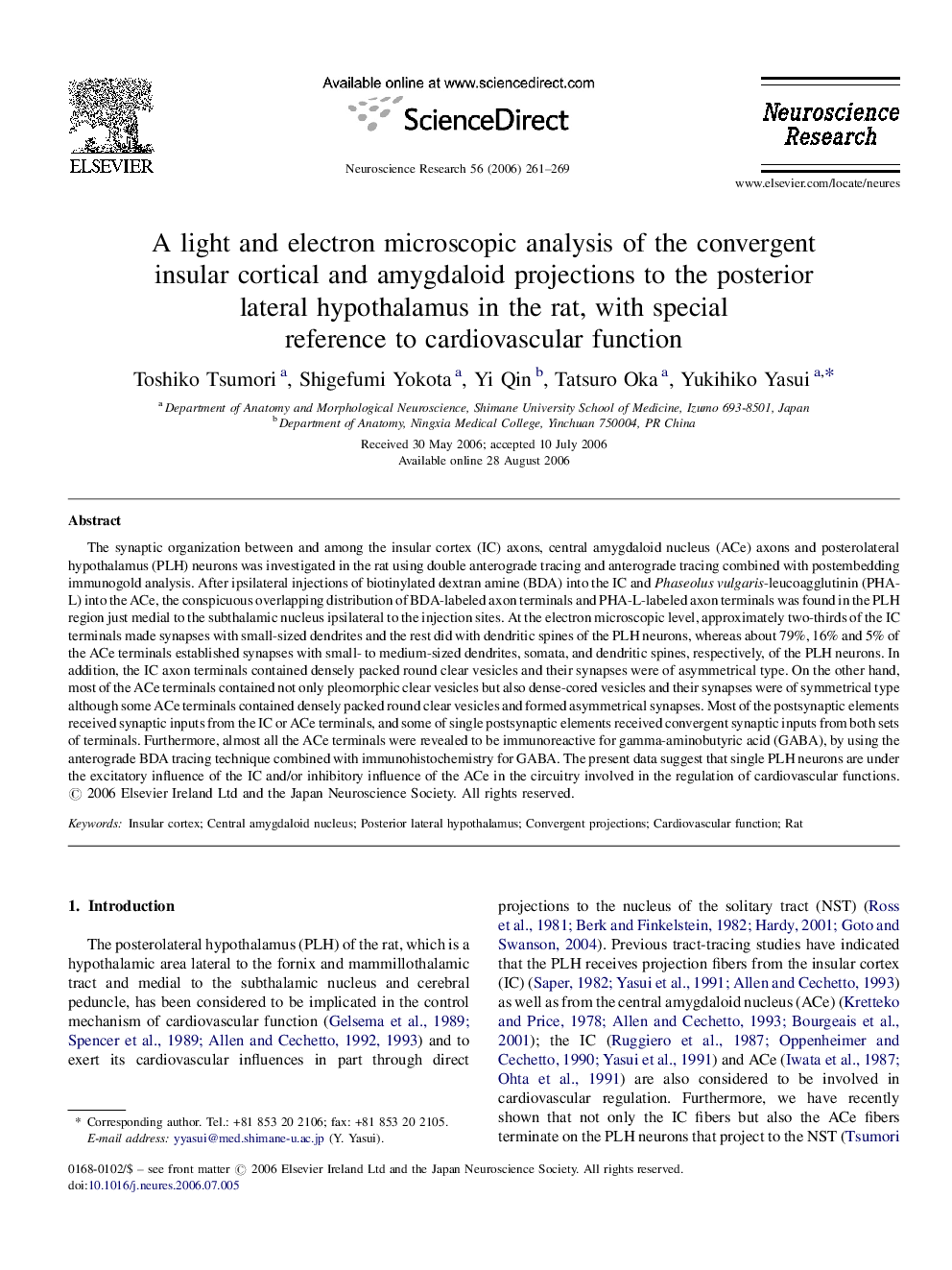| Article ID | Journal | Published Year | Pages | File Type |
|---|---|---|---|---|
| 4353180 | Neuroscience Research | 2006 | 9 Pages |
The synaptic organization between and among the insular cortex (IC) axons, central amygdaloid nucleus (ACe) axons and posterolateral hypothalamus (PLH) neurons was investigated in the rat using double anterograde tracing and anterograde tracing combined with postembedding immunogold analysis. After ipsilateral injections of biotinylated dextran amine (BDA) into the IC and Phaseolus vulgaris-leucoagglutinin (PHA-L) into the ACe, the conspicuous overlapping distribution of BDA-labeled axon terminals and PHA-L-labeled axon terminals was found in the PLH region just medial to the subthalamic nucleus ipsilateral to the injection sites. At the electron microscopic level, approximately two-thirds of the IC terminals made synapses with small-sized dendrites and the rest did with dendritic spines of the PLH neurons, whereas about 79%, 16% and 5% of the ACe terminals established synapses with small- to medium-sized dendrites, somata, and dendritic spines, respectively, of the PLH neurons. In addition, the IC axon terminals contained densely packed round clear vesicles and their synapses were of asymmetrical type. On the other hand, most of the ACe terminals contained not only pleomorphic clear vesicles but also dense-cored vesicles and their synapses were of symmetrical type although some ACe terminals contained densely packed round clear vesicles and formed asymmetrical synapses. Most of the postsynaptic elements received synaptic inputs from the IC or ACe terminals, and some of single postsynaptic elements received convergent synaptic inputs from both sets of terminals. Furthermore, almost all the ACe terminals were revealed to be immunoreactive for gamma-aminobutyric acid (GABA), by using the anterograde BDA tracing technique combined with immunohistochemistry for GABA. The present data suggest that single PLH neurons are under the excitatory influence of the IC and/or inhibitory influence of the ACe in the circuitry involved in the regulation of cardiovascular functions.
